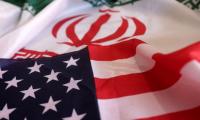The proposed dialogue about Kishanganga and Ratle offers Pakistan and India a golden opportunity to optimise the resources of the Indus Basin. The Greek historian, Herodotus, described Egypt as the “gift of the Nile”.
That description applies more aptly to River Indus and its tributaries which contribute to the fertility of the alluvial plains of Pakistan and large parts of India. The rivers – Indus, Ganges, Brahmaputra – originating in the Himalayas, provide food, fuel and employment to more than one and a half billion people of India and Pakistan. In our culture, this water-fed land is referred to as ‘the motherland’.
Mountain sources of run-off in these rivers have become vulnerable to climate change. Concerns about the impact of climate change on the run-offs of Indus and the other South Asian rivers have given rise to expectations of drastic decreases in flows and displacements of their timings. So far, these concerns are derived from global studies in which temperature increases are producing extreme effects on the climate and these effects are expected to magnify over time.
The specific effects of climate change on glaciers and on river flows in the Western Himalaya-Karakoram-Hindukush are less studied. There are conflicting views – not firmly based on scientific studies – among engineers and scientists that have serious implications for sustainable water management in Pakistan and India. In addition, we have an adversarial geo-political situation directly impacting the utilisation of water resources in both India and Pakistan.
Optimising the utilisation of water resources in our joint basin is also a necessity for our socio-economic wellbeing. This requires us to evaluate options from a 30-50-year perspective as our populations increase but the water supply remains fixed – or decreases. The Indus Basin is already experiencing ‘water scarcity’. A 2010 estimate for Pakistan puts water availability at below 1,000 cubic metres per capita. For India, the situation is similar .The UN medium population projection puts Pakistan’s population at 246 million and 335 million for 2025 and 2050 respectively. This translates to water availability of 711 and 522 cubic metres per capita for 2025 and 2050 respectively.
Expressed simply, the population in Pakistan will continue to increase by about 4 million every year. This means that the Indus Basin will need to produce adequate food and fuel supply against the backdrop of declining per capita availability of water. Recent World Bank studies (Briscoe and Qamar 2007) have suggested that, “There are no feasible interventions which would enable Pakistan to mobilise appreciably more water than it now uses. On the other hand there are significant possibilities for lower water availability due to reallocation of flows…..”
This scenario also applies to our friends on the other side of the border and this is the challenge both nations will face when discussing the issue on March 20, 2017. With the experience of 56 years with the Indus Waters Treaty, we can create a contemporary basis for the dialogue in the light of this hard constraint. The gains from this approach are larger, and the sharing of both benefits and costs more equitable.
The Indus Waters Treaty was designed to regulate the technical specifications of individual projects. Our current process is thus to discuss individual projects as they are initiated by either side. To incorporate the experience, we could ask how we would have developed the Indus Basin if the border were not there. The portfolio of development projects proposed under such a scenario would be different from what is being discussed and for optimisation, the evaluation metrics would be holistic.
The concerns of the lower riparian – pondage, sediment effects, operating rules, volume and timing of flows – would be treated differently. For example, there are many vulnerable ecosystems within the Indus Basin, including wetlands, floodplains and riparian areas, which are affected from upstream interventions. The most serious concern is the limited flow of freshwater to the Indus delta. Lower Indus has seen significant seawater intrusion – up to 100 km upstream – with drastic effects on lower riparian livelihoods, loss of biodiversity, degradation of mangrove systems, declining fish population and loss of agriculture.
From a holistic and sustainable viewpoint, there is a clear need to incorporate these effects in the economic calculations of an upstream intervention. The intra-Pakistan Water Accord 1991 recognised the need for a minimum flow to the delta of 10 million acre feet. The Revised Action Programme 1979 had recommended an area of 20 million acre feet for this use. Sustainable management of the basin would also require conjunctive utilisation of ground and river water and the export of salt and chemicals in the irrigation effluent.
The hydrology of glaciers in the Upper Indus Basin (UIB) would also be treated differently. The mountain ranges encircling the Tibetan Plateau are a complex highland lowland hydrological system involving a range of water supply and use environments. The contribution of mountains to the total flow of the major rivers of South East Asia and the sources of run-off within individual mountain catchment basins vary throughout the region. Recent concerns (IPCC 2007) arising from climate change, retreating eastern Himalayan glaciers and the role played by these glaciers in the rivers of Asia have highlighted how little the scientific community understands the role of the mountain headwaters (glacier melt, snow, rain) to the Asian rivers.
Much of the present understanding of the climate, hydrology and glaciers of these mountains is based on a few analyses of a limited data base. In an area of over 160,000 sq km above the Tarbela reservoir, there are only five hydrometric stations in the main stem of River Indus and fewer than 20 manual climate stations. This density is significantly less than World Meterological Organisation’s recommendations of one gauge per 250 sq km. Credible recent mass balance data is available only for a few glaciers in the Karakoram. The hydrometeorology and glaciers of the Upper Indus Basin (UIB) are not understood due to the orographic complexity of the three-dimensional mosaic of topoclimate within the extreme terrain of the UIB – some of the glaciers are retreating while others are advancing.
Under the current rules of the Indus Waters Treaty, the two parties are expected to evaluate the projects sequentially. This is not optimal since options close with time and thus the utilisation of the basin’s water is sub-optimised. Implementing the treaty without a contemporary understanding of the cumulative impacts and operating rules is appropriate from a legal and engineering perspective, but is sub-optimal from the perspective of water utilisation for the basin as a whole – a situation which both parties should find less than satisfactory.
In 2017, both countries may wish to reconsider the way the treaty is to be implemented – project by project or holistically. There is international experience with the modification and reaffirmation of trans-boundary water sharing (or other complex) treaties. A two-pronged approach may be considered: continuation of negotiations of Kishanganga and Ratle for a resolution via a basin-wide optimisation metric and a parallel effort to create the knowledge base to optimise the basin development.
While the current legal role of the World Bank is limited, its role as a friend and financier is considerable. As was the case for the original Indus Waters Treaty, the analysis and negotiations will be done by Indian and Pakistani scientists and engineers. But the bank may be able to play a substantial role similar to what it played in the 1950s. It can do this by facilitating the development of a shared knowledge base: science-based understanding of the cumulative effects of project cascades and the necessary adjustments (due to the effects of climate change on volume and composition of Indus flows). It can also identify and possibly finance the infrastructure investments including the ones needed for an improved understanding of the hydrology of Himalayan glaciers.
The World Bank can explore potential institutional mechanisms to implement and monitor basin development, including the role of the Permanent Indus Commission, and that of third party technical resources. It can also develop a detailed plan to monitor the basin development under alternative infrastructural cascades with associated operating rules.
This two-pronged approach will not only optimise basin development, but may also positively impact the inter-country relations between India and Pakistan through joint scientific and investigative work.
The writer is a former senior adviser of the World Bank.
Email: Thusain2008@gmail.com
What Washington needs to register is that terrorism is threat not only to Pakistan but also to US and its allies
Global superpowers are weaponising blockchain to assert financial dominance
Pakistan is simultaneously experiencing too much water and too little water
Eminent educationist Baela Raza Jamil launched initiative in Lahore at conference in February 2006
Pakistan has risen to second place in Global Terrorism Index 2025, based on number of deaths in terrorist attacks...
They are waiting for world where they can work without fear and walk without danger







